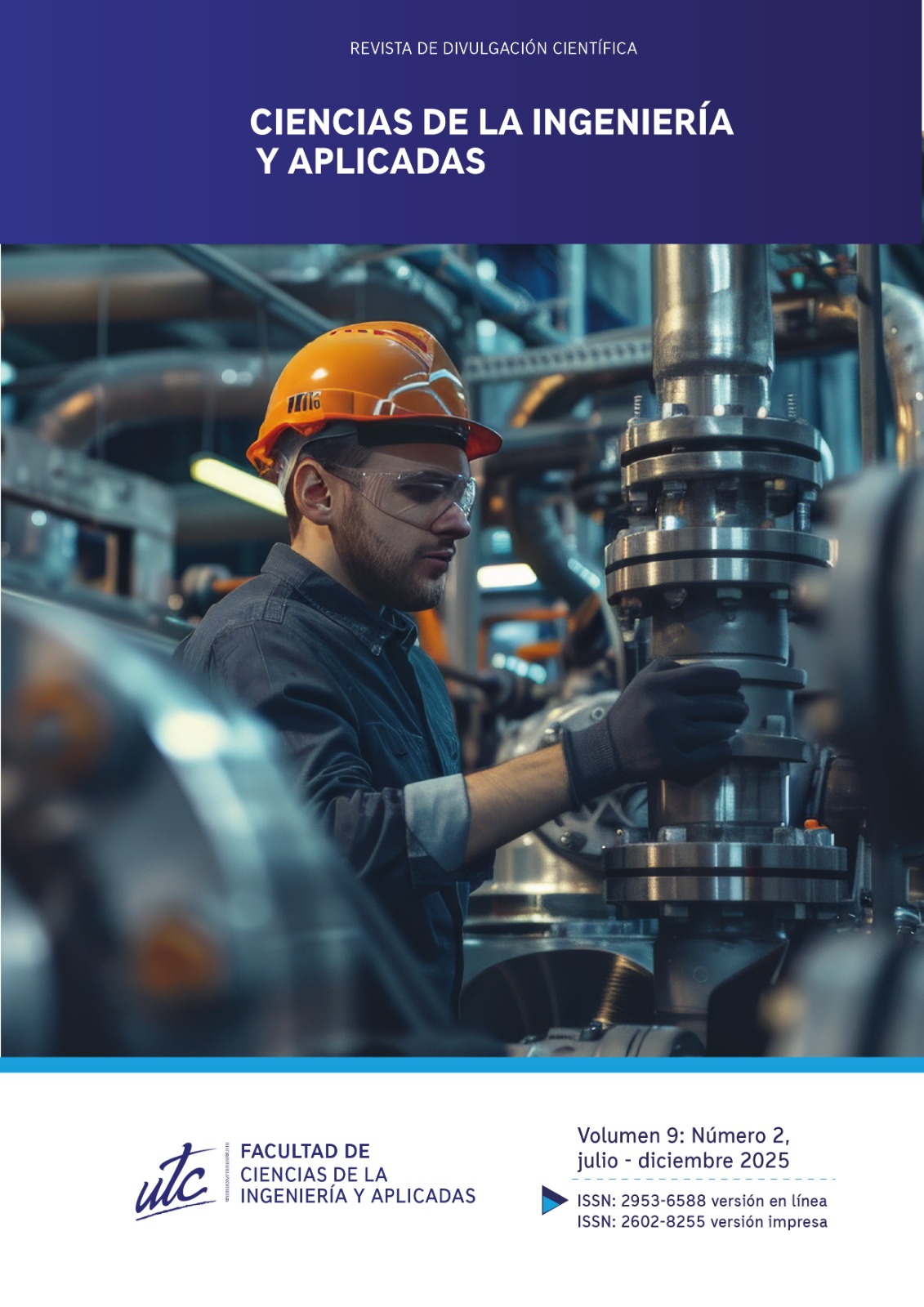Modeling and tuning of the active power control loop in a power plant
Abstract
The MAN engine generator set (a German internal combustion engine manufacturer) with a maximum rated power of 184 MW, located in the city of Moa, Holguín province, is one of the power plants connected to the SEN (National Electric Power System), contributing 165 MW to the system's demand. The generators' active power is regulated by the fuel input to the internal combustion engine, which rotates at a speed of 514 rpm, accelerating or decelerating. The control loop, tuned by trial and error, consists of current and voltage transformers, a PLC (Programmable Logic Controller), and an actuator to manipulate fuel flow. Over the years of operation, the company's engines have suffered wear in their fuel regulation mechanisms, resulting in power fluctuations and losses of up to 2 MW. This article proposes parametric models that describe the system dynamics. Passive experiments were conducted over 10 operational days to model the behavior of engine power relative to the position of the actuator that manipulates fuel flow. As a result, parameters for automatic controllers were proposed to optimize energy consumption, minimize friction losses or thermal inefficiencies, improve combustion efficiency, and reduce pollutant emissions
Downloads
References
A. Guilarte, "Cálculo verificativo del sistema de enfriamiento del aceite de los motores MAN 18V48/60B de la Central Diésel Eléctrica Moa," tesis doctoral, Departamento de Ingeniería Mecánica, ISMM, Moa, Cuba, 2016.
N. Farouk, L. Sheng y L. Said, "Speed control system on marine diesel engine based on a self-tuning fuzzy PID controller," Research Journal of Applied Sciences, Engineering and Technology, vol. 4, nº 6, pp. 686-690, March 2012.
G. Alegret, X. Llamas, M. Vejlgaard-Laursen y L. Eriksson, "Modeling of a large marine two-stroke diesel engine with cylinder bypass valve and EGR system," IFAC-PapersOnLine, vol. 48, nº 16, pp. 273-278, November 2015.
M. Altosole, G. Benvenuto, U. Campora, M. Laviola y R. Zaccone, "Simulation and performance comparison between diesel and natural gas engines for marine applications," Proceedings of the Institution of Mechanical Engineers, Part M: Journal of Engineering for the Maritime Environment, vol. 231, nº 2, pp. 690-704, May 2017.
X. Llamas y L. Eriksson, "Control-oriented modeling of two-stroke diesel engines with exhaust gas recirculation for marine applications," Proceedings of the Institution of Mechanical Engineers, Part M: Journal of Engineering for the Maritime Environment, vol. 233, nº 2, pp. 551-574, May 2018.
J. Yin, T. Su, Z. Guan, Q. Chu, C. Meng, L. Jia, J. Wang y Y. Zhang, "Modeling and validation of a diesel engine with turbocharger for hardware-in-the-loop applications," Energies, vol. 10, nº 5, p. 685, May 2017.
P. Shah, R. Sekhar y P. Singh, «Predictive modeling of a bio-fuelled diesel engine using system identification approach,» in 6th international conference on renewable energy: Generation and applications (icrega), Al Ain, United Arab Emirates, 2021, p. 95-100.
Copyright (c) 2025 Ciencias de la Ingeniería y Aplicadas

This work is licensed under a Creative Commons Attribution-NonCommercial-NoDerivatives 4.0 International License.
The authors who publish in this journal agree to the following terms:
- Creative Commons Attribution-NonCommercial-NoDerivatives License allows others to share the work with acknowledgment of authorship of the work and initial publication in this journal.
- Authors may separately establish additional agreements for the non-exclusive distribution of the version of the work published in the journal (for example, placing it in an institutional repository or publishing it in a book), with an acknowledgment of its initial publication in this journal.
- Authors are permitted and encouraged to disseminate their work electronically (for example, in institutional repositories or on their own website) before and during the submission process, as it can lead to productive exchanges, as well as further citation. earliest and largest of published works (See The Effect of Open Access) (in English).











